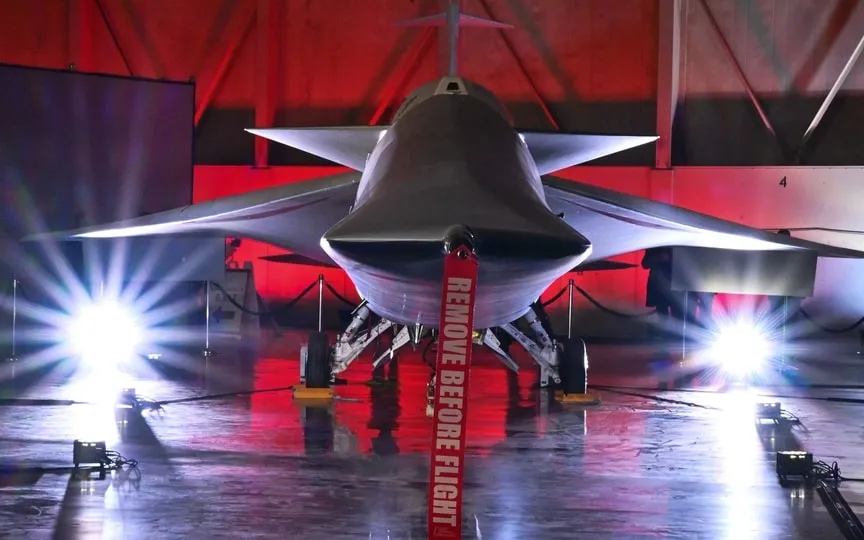Lockheed and NASA Introduce X-59 Supersonic Jet with Reduced Sonic Boom Impact on Windows
Lockheed Martin Corp. and NASA have provided the public with an exclusive preview of an aircraft that has the potential to significantly reduce flight durations. Unveiled in Palmdale, California, on Friday, the X-59 has been specifically engineered to achieve supersonic speeds while generating minimal noise. Traditional aircrafts breaking the sound barrier, known as Mach 1, produce a disruptive and continuous sonic boom that can cause damage to ground structures. Consequently, the US prohibited civilian planes from surpassing this speed over land in 1973.
“This breakthrough really redefines the feasibility of commercial supersonic travel on land,” said Pam Melroy, NASA deputy administrator and former Space Shuttle commander, during the unveiling of the nearly 100-foot-long (30-meter) machine. “It brings us closer to the future we all understand: cutting the flight time from New York to Los Angeles in half.”
Lockheed Martin won a roughly $250 million contract from NASA in 2018 to build a single-pilot demonstration aircraft powered by General Electric Co.’s F414 engine to help overcome that hurdle. The aircraft is designed to reach 1.5 times the speed of sound, while dampening the sonic boom with its v-shaped wing and elongated nose. The company originally planned to fly the X-59 in 2021. The entire project, including testing, will cost about $632 million over eight years, NASA said.
If the X-59 is successful and then applied to commercial aviation, flight times can be significantly reduced. Lockheed has said it will reach speeds of 925 mph (1,489 km/h), well above current single-aisle airliners, which top out at around 550 mph. In addition to overcoming the noise boom, the industry would have to deal with stricter noise regulations at airports than when the European-built Concorde stopped supersonic flight operations in 2003. The environmental effects of aircraft emissions will also be examined more strictly.
The shape of the nearly 30-meter (100-foot) aircraft, which has a cockpit with no forward-facing glass, is designed to disperse the shock waves from the supersonic aircraft and then coalesce to create a thunderous boom known as a sonic boom. The pilot sees through a high-resolution camera that feeds images to a screen, one of many innovations that will help advance the design of commercial airplanes, Melroy said.
“The exterior vision system has the potential to influence future aircraft designs where the absence of a forward-facing window may prove to be advantageous for technical reasons, as it was for us,” he said.
The aircraft is not yet ready to fly and will undergo more ground tests to determine if additional adjustments are needed, NASA engineer Mark Mangelsdorf said in an emailed response to questions. The X-59 is expected to make its first flight this year, but no date has been set. The plan is for the research plane to fly over yet-to-be-selected communities to measure whether the noise level in the country is low enough to be acceptable to the public.
Aerion Corp., a startup backed by Texas billionaire Robert Bass, was trying to build a business jet that would cruise across the ocean at 1.4 times the speed of sound and at a negative gas pressure on Earth. The company ceased operations in 2021 due to lack of funding. Boom Technology Inc. plans to build a supersonic plane and has drawn interest from American Airlines Group Inc., United Airlines Holdings Inc. and Japan Airlines Co.




